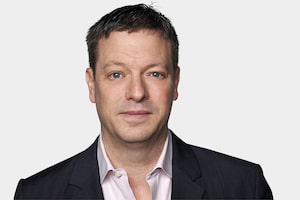If generals always fight the last war, politicians often make long-term plans based on the earliest days of the current one. And nothing in modern history has so quickly changed the thinking of generals and politicians as much as Russia’s atrocious and ill-conducted invasion of Ukraine.
What has changed since Feb. 24 has not been the global importance of this conflict but its lessons for defence budgets. In short, Russian President Vladimir Putin has shown NATO countries, including the United States, that most of them are already spending more than enough on defence – although maybe not always on the right things – and that the 20-year-old goal of spending 2 per cent of their economies on their militaries is, for most, unnecessary.
It is vital, for the future of the democratic world, that Mr. Putin not succeed in seizing control of Ukraine or other former Soviet satellites, and that Ukraine and its allies have the resources to ensure that he doesn’t. It is also very much evident, and has been for more than a month, that he won’t, and can’t.
The world’s second largest military, one whose government in recent years has spent as much as 5.5 per cent of its GDP on defence (and, experts say, probably more), has been utterly unable to take control of Kyiv, or any other major city that’s more than a short distance from the ends of Russian rail lines.
A gigantic, well-funded professional military has been no match for a determined, nation-wide mobilization of an army one-tenth its size, supplied by wealthier countries with a constant flow of high-tech munitions and likely high-quality real-time intelligence information.
But our political thinking remains mired in late February, when many believed Russia would overtake all of Ukraine, and possibly head into the Baltic states – and that this might embolden Beijing to mount a similar war of conquest against Taiwan.
That moment did lead to some welcome changes. The world’s democracies came together in a rare moment of unity to shut off Russia’s economy, and therefore its ability to build any more tanks, and to provide Ukraine with arms and information. Germany ended 50 years of co-operation with Russia and agreed to send heavy arms and training to Ukraine (something it only got around to delivering this week).
Why a freeze on the Arctic Council is short-sighted
Building a war-crimes case against Vladimir Putin
But a lot of countries simply decided to increase military spending, on the February-era logic that the world had become more dangerous.
A few probably needed to: Canada’s $8-billion increase in defence spending over five years was based mainly on a need to modernize a force that’s important for both domestic and international co-operation reasons. But many others, including already big-spending countries such as the United States and Britain, decided to up their military budgets further, and some recommitted themselves to the 2-per-cent-of-GDP spending goal – a target never met by more than a third of NATO members, and originally established at a summit in Prague in 2002, when the U.S.-led War on Terror made it seem that the future of warfare lay in multicountry coalitions occupying countries for many years.
Those heavy-footprint, colonial-scale operations have not turned out to be a good use of military alliances or an effective way to help the populations of afflicted countries, to put it mildly. They are, ironically, exactly what Russia has been attempting in Ukraine, and what China would be taking on should it send its forces across the Taiwan Strait.
A Chinese invasion of a neighbour wouldn’t be fought by having other nuclear-armed countries invade the mainland and try to seize Beijing. Rather, it would be similar to what’s happening in Ukraine, with fellow democracies providing arms and intelligence to a determined people fighting a huge military that, in China’s case, hasn’t seen combat since 1977. This is what NATO has always done best: providing specific forms of support to populations (always of non-NATO countries) resisting atrocities, such as in the former Yugoslavia, in Libya, and now in Ukraine.
Before 2022, there was a growing consensus in NATO’s orbit, expressed in a number of reports, that the 2-per-cent target was excessive and misleading. Some countries that met it, such as Greece, did not have very useful militaries, but simply shrinking GDPs and a lot of make-work soldiers. The coalition had identified shortfalls in certain munitions and arms, but those were utterly unrelated to total defence spending. The target remained in place, however, because we imagined that it’s a dangerous world where the bigger-spending authoritarian states can only be resisted with big-ticket mass armies.
What Vladimir Putin has really accomplished is showing us that the world is, in fact, slightly less dangerous than we thought. Our spending ought to reflect that new reality.
Keep your Opinions sharp and informed. Get the Opinion newsletter. Sign up today.
 Doug Saunders
Doug Saunders